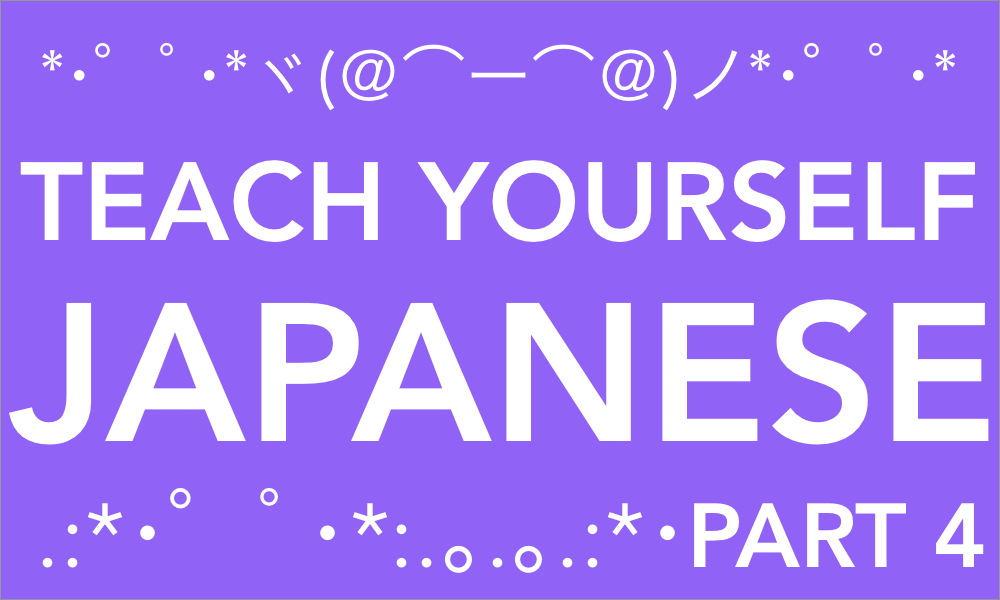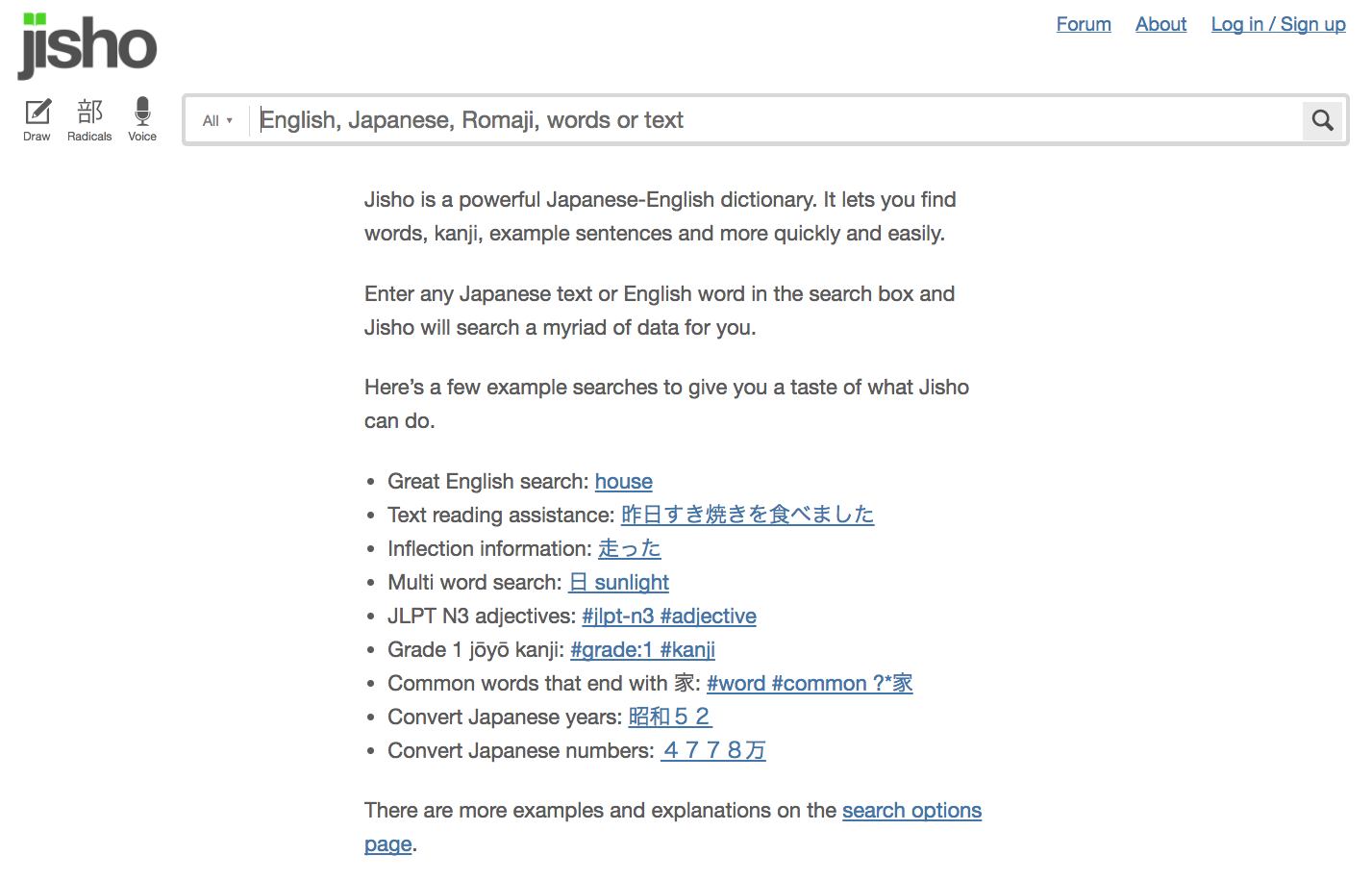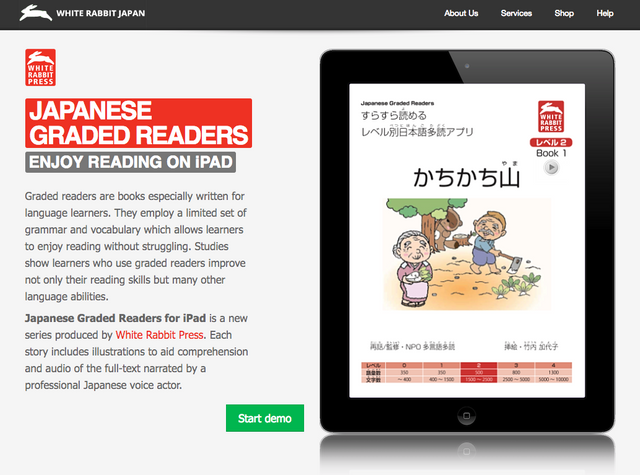How to Teach Yourself Japanese: Study Habits & Input / Part 4 of 5

Posts in this series: Part 1 / Part 2 / Part 3 / Part 4 / Part 5
In the last post we learned about making Anki cards from Tae Kim’s grammar guide, along with some pronunciation tips.
And back to Tae Kim…
So the goal now is to work through all of Tae Kim’s grammar guide, which is clearly not a small task. There is a ton of info in there, and certain parts of it will make absolutely no sense, even after you have read the explanation multiple times. This is okay! Do your best to understand it, but then move on to something else. As long as you keep moving forward, you’ll come back to it down the road and it will be obvious.
We’ve been spending a ton of time stuck in textbooks and learning to read kana and kanji. Now we need something else to keep things interesting and really push our abilities forward. This is where input comes in.
Input!

Using a textbook and doing Anki reviews is great, but without coming across tens or hundreds or thousands of examples of the things you’re learning in context, it isn’t really internalized. When you’ve come across something so many times that it’s second nature, that’s when it will start to come to you naturally when you speak. This is our goal.
It’s Okay to Pace Yourself
When I started with input, the advice was always to just dive in head first and consume as much as possible — listen to Japanese podcasts all day, leave Japanese TV on in the background from the moment you start until you’re fluent, read hours of manga and books a day.
I guess some people are able to commit to something like this, but for me it has always ended up being too intense. As an adult, it’s really hard to live in a world where your brain has the language ability of a 3 year old. It gets easier over time as you learn more, but in the beginning I found that what worked best for me was…
Anki Goals, Input Minimums, Then Guilt Free Play
The best approach I’ve found for this is to set daily goals, and then anything after they’re complete is just a bonus — great, but certainly not necessary.
So a typical day might involve the following (and of course you can adjust down or up depending on how much time you have):
- finish all due Anki reviews
- add 5-10 new cards
- 20 minutes of reading
- 20 minutes of listening
After this point, if you get hooked on whatever you’re reading, watching, or listening to and want to keep going, great! If not, let yourself do whatever you’d like without guilt. Remember that you’re taking time to study Japanese, something that is commendable if it’s two minutes or two hours.
The really, truly effective way of learning is going to be whatever allows you to stick with it for the long haul. Studying Japanese is a huge undertaking and no matter how much you’re able to learn every day, it won’t really mean much if you burn out and give up. We need to build effective, sustainable habits that are enjoyable enough to follow through on consistently, and substantial enough that we feel like we’re still making progress towards our goal.
In this post we’ll look at easier materials like graded readers, and in the next post I’ll talk more about TV, manga, books, movies, etc.
So how do you do it?
In the beginning we’ll focus on easy reading materials that come with audio. Read through the text a few times, then read through while listening to the audio, and loop the audio later for some listening practice. Repeat this process until you feel comfortable with the text, and then move on to something else.

You can look up new words in the dictionary (try Jisho, or the built in dictionary on your computer) and make cards for them. Just put the Japanese sentence on the front and the definition on the back. If the sentence has a bunch of new words in it, making the sentence too complicated for a new card, just skip it and move on.
A good place to start is with graded readers like these ones from White Rabbit Press. They’re pretty expensive, but I found them to be more enjoyable than trying to read children’s books — and a really big benefit is that they all come with the audio of the story to listen to.

Another resource is Lingq, which has a freemium model where you can access the content for free but need to pay $10/month if you want to use all of the tools. I can’t really recommend it wholeheartedly because the interface can be a little clunky, but it does have a ton of good content with matching audio. It is built around a system where you can look up words in the interface as you read and save them.

A good, but pretty old, option is Assimil Japanese. It’s a really popular set of language courses that is essentially just a collection of dialogues and matching audio files. They work great in the beginning when you’re lacking things that you can understand, but it’s a bit expensive (volume one is about $45) and the dialogues are pretty dated at this point. Still a great resource though.
And lastly, pretty much anything you can get your hands on that you enjoy. Here’s a post on Tofugu with some recommendations. There are podcasts like Japanese Pod 101 (most of their content is pretty excruciating to listen to, but it’s abundant and cheap), sites like News in Slow Japanese, and a ton of other resources.
And that’s it for part 4! In the 5th and final post we’ll look at more sources to get input, speaking and writing practice, and some advanced topics.
I hope this was helpful and don’t forget to let me know in the comments if you have any questions!
Posts in this series: Part 1 / Part 2 / Part 3 / Part 4 / Part 5
good article, thanks. though I hardly dare ever on this.
your post is very good, very useful, your post is so inspiration for me and all users of steemit, I am proud of you ... I am amazed to you, you are very fantastic in making a post, hopefully triumph in the work .. Thank you 💏😘
Congratulations @jeffbernst, this post is the tenth most rewarded post (based on pending payouts) in the last 12 hours written by a Newbie account holder (accounts that hold between 0.01 and 0.1 Mega Vests). The total number of posts by newbie account holders during this period was 4554 and the total pending payments to posts in this category was $5041.87. To see the full list of highest paid posts across all accounts categories, click here.
If you do not wish to receive these messages in future, please reply stop to this comment.
Lovely article. Thanks for sharing. Could I get in touch with you privatelt? I'll appreciate it